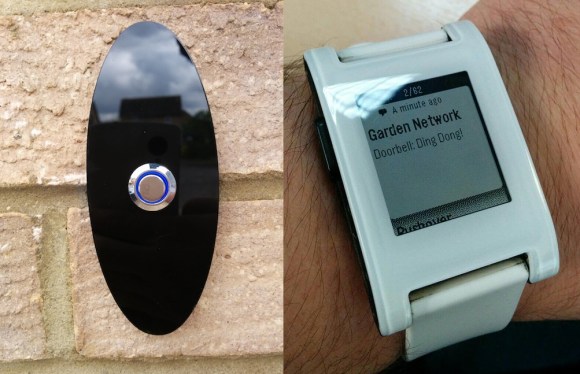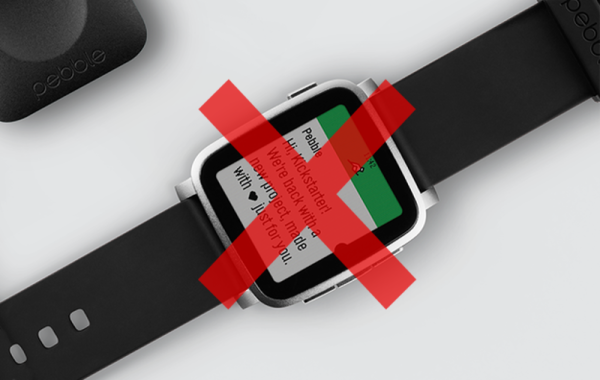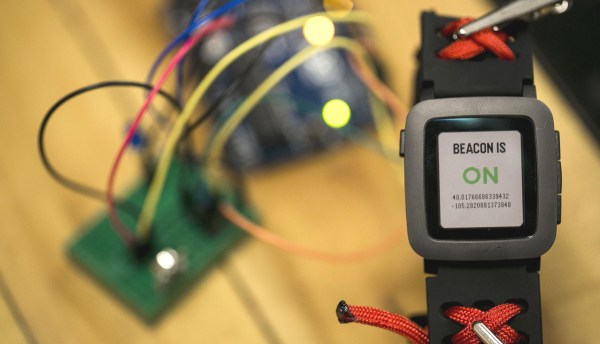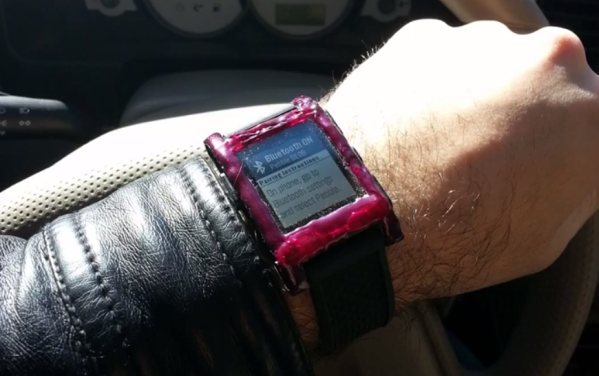Since Dick Tracy all the way back in ’46, smart watches have captured the public imagination. After several false starts, the technology has gone through a renaissance in the last 10 years or so. For the average consumer, there’s been a proliferation of hardware in the marketplace, with scores of different models to choose from. For the hackers, however, pickings are a little more slim. So what is the best smart watch for the tinkerers among us? Continue reading “Ask Hackaday: What’s The Perfect Hacker Smart Watch?”
pebble7 Articles
Hackaday Links: July 1, 2018
Remember when computer mice didn’t have scroll wheels? The greatest mouse of all time, the Microsoft Intellimouse Explorer 3.0, is back in production. This mouse was released in 2003, before the popularity of ‘gaming’ mice from the likes of Razer, and at the time it was the standard mouse for RTS and FPS professional gamers. After producing a few million of these mice, the molds died or the sensors were out of stock, Microsoft stopped shipping the Intellimouse Explorer 3.0, and the ones that were out in the wild slowly died. Now this fantastic mouse is back, and it’s only going to set you back $40. Believe me when I say this is one of the greatest user interface devices ever created, right up there with the Model M keyboard.
Another week, another update on building an airplane in a basement. [Peter Sripol] has basically finished the fuselage of his homebuilt ultralight with working elevator, rudder, and landing gear that looks like it might hold up.
The Pebble was one of the most successful crowdfunding campaigns ever, and now it’s dead. Pebble was bought by Fitbit for $40M, and now the Pebble servers are off, as of June 30th. Of course there are community-based projects to keep the Pebble working, notably the rebble project.
It’s time for Steam’s summer sale, and your wallet is crying. The standout deal is the Steam Link, a sort of ‘thin client for Steam’ that plugs into your TV, looks on the network for your battlestation, and allows you to play Fortnite or whatever on the big screen. The Steam Link normally sells for $50, but with the summer sale it’s two dollars and fifty cents.
Here are a few experiments in CNC joinery. [Mirock] has a CNC machine and a few pieces of wood, and explored what is possible when you want to join two boards at ninety degrees to each other. Why is this interesting? One of the joints on this simple box project consists of a circle with a hole on one board, and a pin on the other. This is basically a Knapp joint, a ‘dovetail’ of sorts that was developed in the 1860s. This was the first popular machine-made joint in woodworking, and if you ever see it on an antique, it solidly dates that piece to any time between 1870-1900. Of course, now that you can just buy a CNC router, an infinite variety of joints are possible, and [Mirock] can experiment with all sorts of combinations of pins and tails and mortises and tenons.
Official: Pebble Ceases Hardware Production
Today Pebble has announced that it will cease all hardware production. Their outstanding Kickstarter deliveries will not be fulfilled but refunds will be issued. Warranties on all existing hardware will no longer be honored. However, the existing smartwatch service will continue… for now.
This isn’t unexpected, we ran an article yesterday about the all-but-certain rumors FitBit had acquired Pebble (and what led to that). Today’s news has turned speculation about Pebble 2 and Pebble Core Kickstarter campaigns into reality. You won’t get your hands on that fancy new hardware, but at least backers will have the money returned.
Perhaps the most interesting part of today’s blog post from the founder of Pebble, Eric Migicovsky, is about how this impacts more than a million watches already in the wild. Service will continue but (wait for it) “Pebble functionality or service quality may be reduced in the future.”
It’s not like this is a unique problem. Devices purchased by consumers that are dependent on phoning home to a server to function is a mounting issue. Earlier this year [Elliot Williams] coined this issue “Obsolescence as a Service” which is quite fitting. Anyone who still has a functional first generation iPad has enjoyed reduced quality of service; without available upgrades, you are unable to install most apps. It’s zombie hardware; electrons still flow but there’s no brain activity.
One of the perks associated with FitBit acquiring Pebble is that they have decided to keep those servers running for watches in the field. A cynic might look at the acquisition as FitBit reducing competition in the market — they wouldn’t have let hardware production cease if they were interested in acquiring the user base. At some point, those servers will stop working and the watches won’t be so smart after all. FitBit owns the IP which means they could open source everything needed for the community to build their own server infrastructure. When service quality “reduced in the future” that’s exactly what we want to see happen.
The Demise Of Pebble As A Platform
Despite owning five, including the original Pebble, I’ve always been somewhat skeptical about smart watches. Even so, the leaked news that Fitbit is buying Pebble for “a small amount” has me sort of depressed about the state of the wearables market. Because Pebble could have been a contender, although perhaps not for the reason you might guess.
Pebble is a pioneer of the wearables market, and launched its first smartwatch back in 2012, two years before the Apple Watch was announced. But after turning down an offer of $740 million by Citizen back in 2015, and despite cash injections from financing rounds and a recent $12.8 million Kickstarter, the company has struggled financially.
An offer of just $70 million earlier this year by Intel reflected Pebble’s reduced prospects, and the rumoured $30 to $40 million price being paid by Fitbit must be a disappointing outcome for a company that was riding high such a short time ago.
The PebblyPi: A Smart Doorbell

A Pebble smart watch, and a Raspberry Pi. They are a perfect match. This is probably what [Daniel] thought when he embarked upon his latest project, a smart doorbell called the PebblyPi (tip submitted by [Ben]).
The actual project is quite easy to implement. All you need really need is a Raspberry Pi, a switch, a resistor, and a Pebble Smart Watch (plus a smart phone). Using a simple Python script on the Raspberry Pi, button press notifications are sent to Pushover, which allows the notification to arrive on your smart phone (and thus your Pebble Smart Watch). Pushover is a very cool notification service for Android devices, iPhones, iPads, and your Desktop. The concept behind this project is great, and the fact that it is so simple to implement opens up many other possibilities for interfacing your home electronics with the Pebble Smart Watch (or even just your smart phone). The ability to create custom notifications on any of your devices using any internet connected system is amazing!
You could receive notifications from your absurdly accurate weather station, or even your soil moisture monitor. Have you used Pushover in any of your projects? The possibilities are endless!
Fixing The Unfixable: Pebble Smartwatch Screen Replacement
[Colt] found himself with a broken Pebble, so he fixed it. The Pebble watch really ignited the smartwatch world with its record-breaking Kickstarter campaign. Working on the Pebble has proved to be frustrating experience for hardware hackers though. Ifixit’s teardown revealed the Pebble extremely difficult to repair. This isn’t due to some evil plan by the smartwatch gods to keep us from repairing our toys. It’s a problem that comes from stuffing a lot electronics into a small waterproof package. [Colt’s] problem was a bad screen. Pebble has a few known screen issues with their early models. Blinking screens, snow, and outright failed screens seemed to happen at an alarming rate as the early Kickstarter editions landed. Thankfully all those issues were corrected and replacements sent to the unlucky owners.
The actual screen used in the Pebble is a Sharp Memory LCD. Memory is an apt name as the screens actually behave as a SPI attached write only memory. Sharp sells flexible printed circuit (FPC) versions of the LCDs to aid in debugging. For space constrained designs though, an elastomeric or “zebra strip” connector is the common way to go. Alternating bands of conductive and insulating material make electrical connections between the Pebble’s circuit board and the conductive portions of the LCD glass.
[Colt] found himself with a dead screen out of warranty, so he decided to attempt a screen replacement. He found a replacement screen from Mouser, and proceeded to remove the top case of his watch. The top plastic case seems to be the hardest part of getting into a Pebble. It appears to be bonded with a glue that is stronger than the plastic itself. [Colt] broke the glass of his screen during the removal, which wasn’t a big deal as it was already dead. Prying only destroyed the top plastic, so he broke out a rotary tool which made quick work of the plastic. The new screen worked perfectly, but had to be held in just the right position over its zebra connector. Some waterproof epoxy held it in place permanently. The next step was a new top cover. An old flip phone donated its plastic shell to the effort, and hot glue kept everything in place. [Colt] finished his work with a couple of layers of model paint. The result certainly isn’t as pretty or waterproof as the original. It is functional though, and about $120 USD cheaper than buying a new Pebble.
Continue reading “Fixing The Unfixable: Pebble Smartwatch Screen Replacement”
Pebble Watch Hack Makes It A Home Automation Controller
[Enrico] loves his Pebble watch, and recently had a chance to explore the code package used to customize its function. It turned out to be really easy to work with so he set out to make the Pebble watch into a home automation controller (dead link; Internet Archive).
So far the two bits of hardware used in his experiments are shown in the image above. The watch itself serves as the controller, interacting with the Ethernet relay board seen in the background. The watch communicates via Bluetooth but you don’t have to know much about that thanks to the example files available from the repository. With communications taken care of he needed a menu system to access commands on the watch. Instead of coding his own he hacked a playlist into the built-in music menu. This allows him to switch the relays on and off again as if he were playing or pausing audio tracks. See it in action after the break.
Continue reading “Pebble Watch Hack Makes It A Home Automation Controller”

















